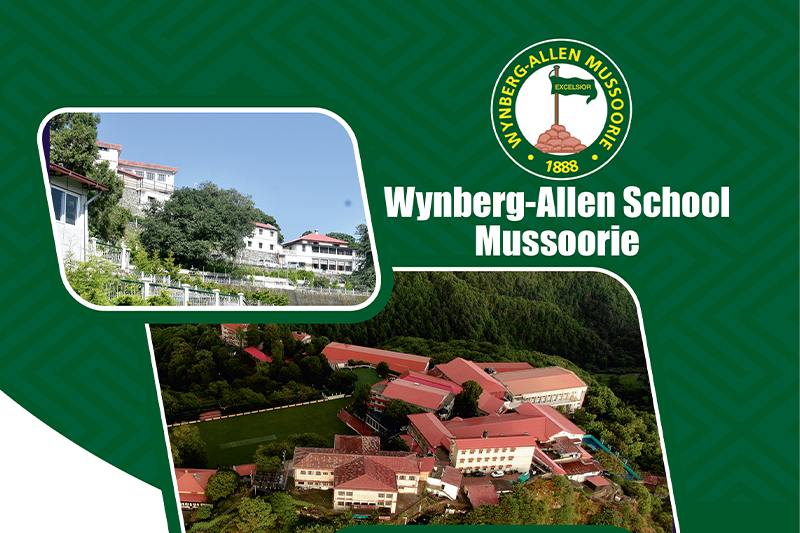Mrs. Shalini Ashok, Sri Sharada Public School, Mysuru: Cultural Exchange for Global Learning & Empathy
“Cultural exchange doesn’t just teach students about the world—it prepares them to lead it with empathy, openness, and purpose.”
In today’s interconnected world, the true measure of education is no longer limited to academic achievement alone. The 21st-century learner must be equipped not just with information but with insight—an understanding of diverse cultures and global issues and the ability to connect meaningfully across borders.
Mrs. Shalini Ashok, a seasoned educator committed to student development through collaborative and international initiatives, emphasizes that cultural exchange programs are not merely luxuries or supplements to education but essential components in preparing young people for a truly global future.
“These programs go far beyond classroom boundaries,” she explains. “They nurture empathy, expand perspectives, and turn students into not just learners, but global citizens.”
Moving Beyond the Classroom Walls
Education must evolve with the times. While still important, traditional models of instruction can no longer be the sole ways students engage with the world. Books and lectures offer information, but they rarely provide immersion.
This is where cultural exchange programs come in. Whether through travel, virtual collaborations, or school partnerships, these experiences enable students to enter another culture. They do not simply observe; they actively participate—hearing new languages, experiencing unfamiliar customs, tasting new foods, and learning to find common ground in difference.
Such immersive learning helps students see cultural practices as deeply rooted in history, geography, and shared human values, rather than as strange or distant phenomena. At the same time, they often gain a clearer understanding of their own identities.
Developing Real-World Skills That Matter
Cultural exchange programs foster more than intellectual or emotional growth—they build practical skills that are increasingly demanded in today’s global workforce. Adaptability, cross-cultural communication, teamwork, and emotional intelligence flourish in these environments.
Imagine students collaborating on an environmental project with peers from multiple countries. They must listen, adapt, resolve differences, and coordinate across languages and time zones. These experiences cultivate resilience, diplomacy, and global thinking in ways that textbooks alone cannot.
Mrs. Ashok points out that even small interactions—sharing meals with host families, learning traditional dances, participating in local festivals—leave lasting impacts. Students learn to be respectful guests, curious learners, and open-hearted friends. Upon returning, they often feel more grounded, humble, and aware.
A Shift in Educational Mindsets
Schools embracing cultural exchange are adopting a progressive and humanistic mindset. Mrs. Ashok calls cultural exchange not just a program but a philosophy.
“It reflects a belief that education must prepare students for more than just exams—it must prepare them for life.”
As global challenges such as climate change, migration, technological disruption, and geopolitical tensions grow more complex, collaboration and intercultural understanding become urgent. Education systems must produce learners who are comfortable with diversity and capable of working with people from all walks of life.
Many schools are rethinking curricula to integrate global perspectives across subjects. In language classes, students connect with native speakers. History lessons compare narratives from different cultures. Art, music, and literature reveal global richness. Structured physical and virtual exchange programs help students apply these real-world skills.
Virtual Exchanges: A New Frontier in Global Learning
The COVID-19 pandemic underscored virtual connectivity’s importance, and cultural exchange adapted accordingly. While physical travel was restricted, many schools turned to virtual exchange programs to sustain global learning.
Mrs. Ashok views this evolution positively:
“Virtual exchange may not offer the same depth as physical immersion, but it opens doors for many more students.”
Virtual classrooms now connect students across continents, facilitating cross-cultural dialogue at scale. These platforms democratize access, enabling participation from under-resourced schools. Carefully designed online collaborations, debates, cultural presentations, and joint projects continue to build bridges of understanding—one screen at a time.
Planting Seeds of Peace and Cooperation
The most profound benefit of cultural exchange is its long-term impact. These programs foster a more peaceful, cooperative global society by cultivating mutual respect and shared values from a young age. They challenge stereotypes, break down prejudices, and humanize “the other.”
Students who grow up with these experiences are more likely to become empathetic leaders, responsible citizens, and advocates for inclusivity.
Mrs. Ashok notes that many students pursue careers in international relations, education, development, or entrepreneurship, which are shaped by their early moments of cultural connection.
“Even those who don’t carry the experience explicitly often embody it in their openness, curiosity, and compassion,” she reflects.
Conclusion: Making Cultural Exchange Essential
In a world often divided by polarization, cultural exchange offers a powerful counterbalance rooted in understanding, curiosity, and shared humanity. Mrs. Shalini Ashok urges educators, policymakers, and parents to regard these programs not as extracurricular but as essential to modern education.
The future demands more than knowledge. It requires wisdom, empathy, and the ability to relate respectfully to others. Cultural exchange nurtures these qualities from the ground up, preparing learners for global careers and meaningful lives—lives dedicated to unity rather than division.
“When students meet the world, they don’t just learn about it—they learn to love it, respect it, and improve it. That is the real goal of education,” Mrs. Ashok concludes.
Want more thought-provoking articles like this? Check out EducationToday – where education meets innovation.






